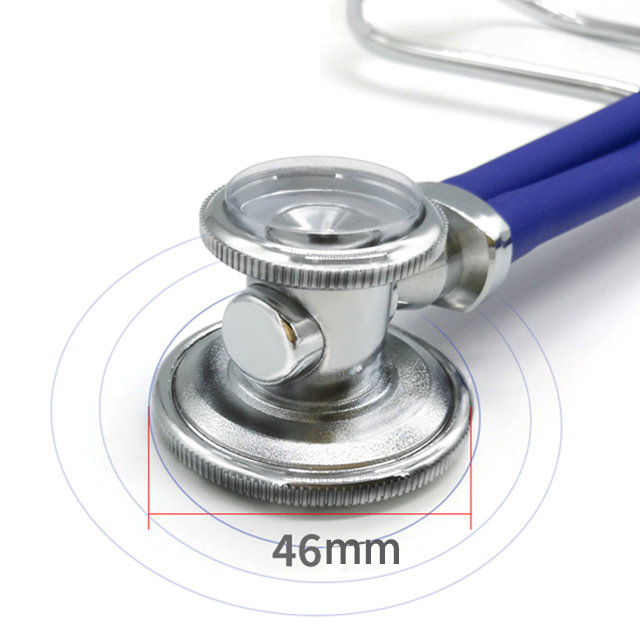Stethoscope is the most commonly used diagnostic equipment in clinics, and it is a sign of doctors. Modern medicine began with the invention of stethoscope.Since the stethoscope was applied to the clinic on March 8, 1817, its shape and transmission mode have been improved continuously, but its basic structure has not changed much.
The Stethoscopes are used to auscultate the sound changes of activities such as human heart, lungs and organs. There are many kinds of stethoscopes on the market. The difference between stethoscopes of different grades is not obvious when listening to normal sounds, but there is a world of difference when listening to murmurs. Generally speaking, the higher the quality of the stethoscope, the stronger the ability to distinguish and analyze the noise, and the longer the use time. When purchasing, we can choose from three parts:the size of the stethoscope head, the material of the stethoscope, and the earplugs of the stethoscope.

1. The size of the stethoscope auscultation head: the larger the contact surface between the auscultation head and the skin, the better the sound effect will be picked up. However, the surface of the human body has curvature. If the chest piece is too large, the earpiece cannot fully contact the human body. The sound will not only be picked up well, but will also leak out from the gap. Therefore, the size of the auscultation head should be based on clinical needs. At present, the diameter of the stethoscope chest piece is almost between 45mm to 50mm. The special use for pediatrics,its diameter of the chest piece is generally 30mm. and for the infant,its diameter is normally 18mm.

2. Check the material:Now the head material is widely use the aluminium alloy,zinc alloy or stainless steel,but in some certain circumstances also use the plastic or copper.the material plays an very important role in the sound effect, the sound is transmitted through the air or material, and finally converted into heat energy and disappears. The transmission of sound waves has almost no attenuation in heavy metals, but is prone to attenuation in lighter metals or plastics. Therefore, high-grade stethoscopes must use heavy metals such as stainless steel or even titanium.

3. Check the earplugs. Whether the earplugs fit well with the ears is very important. If the earplugs are not suitable, the sound will leak out, and at the same time, external noise can also enter and confuse the auscultation effect. Professional stethoscopes are generally equipped with closed earplugs with excellent sealing and comfort.
Post time: Jun-16-2023

